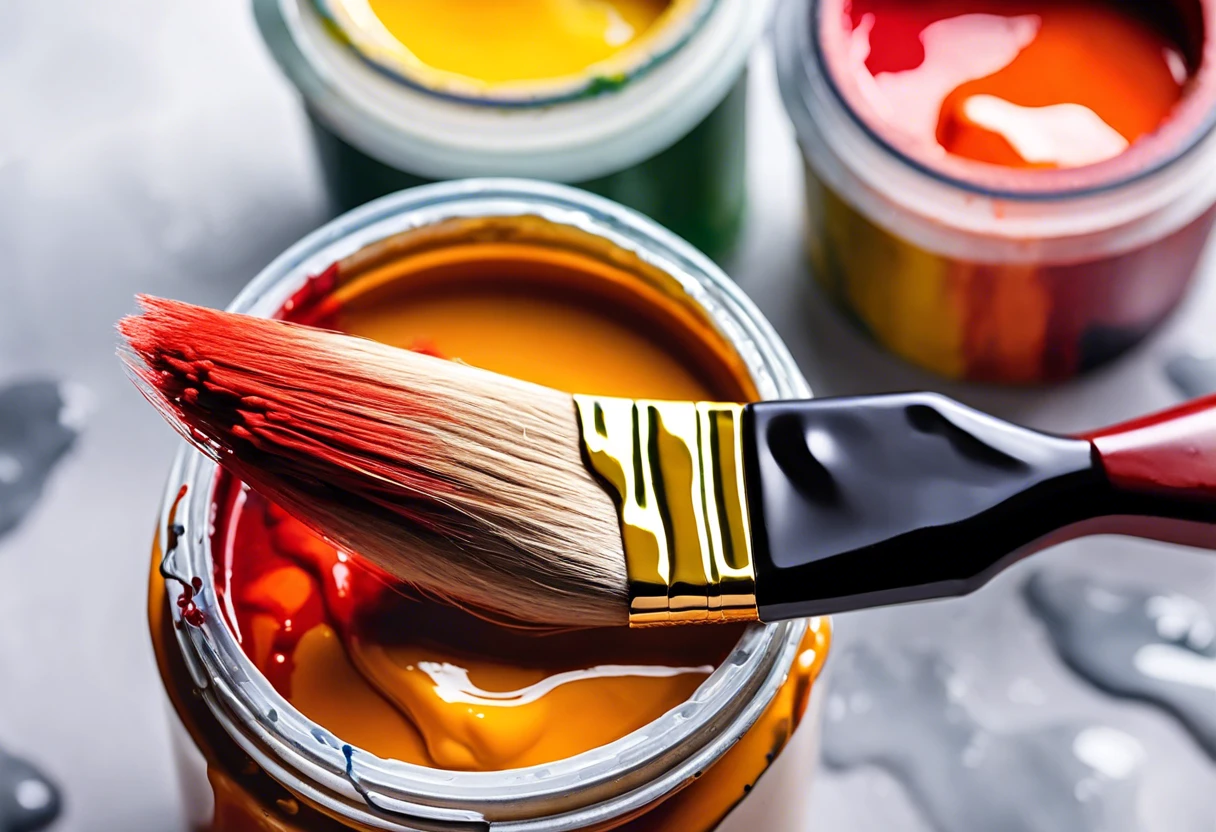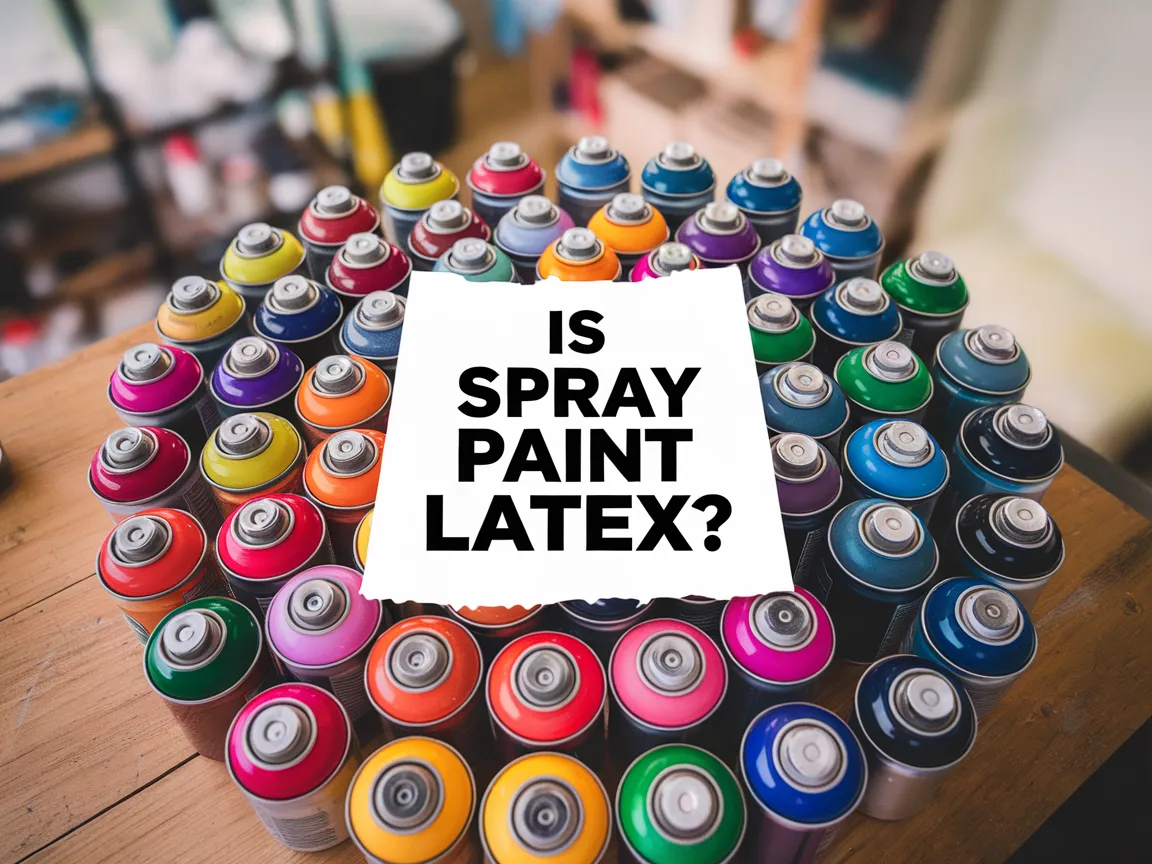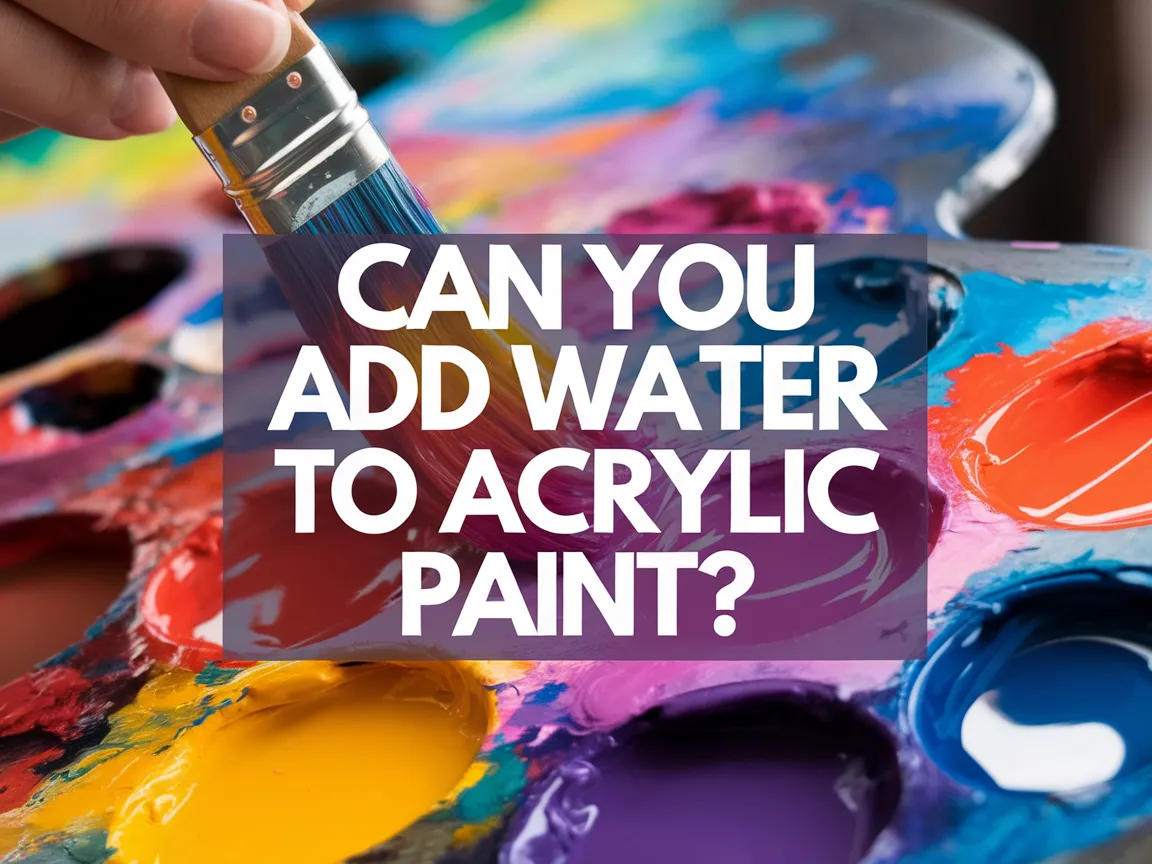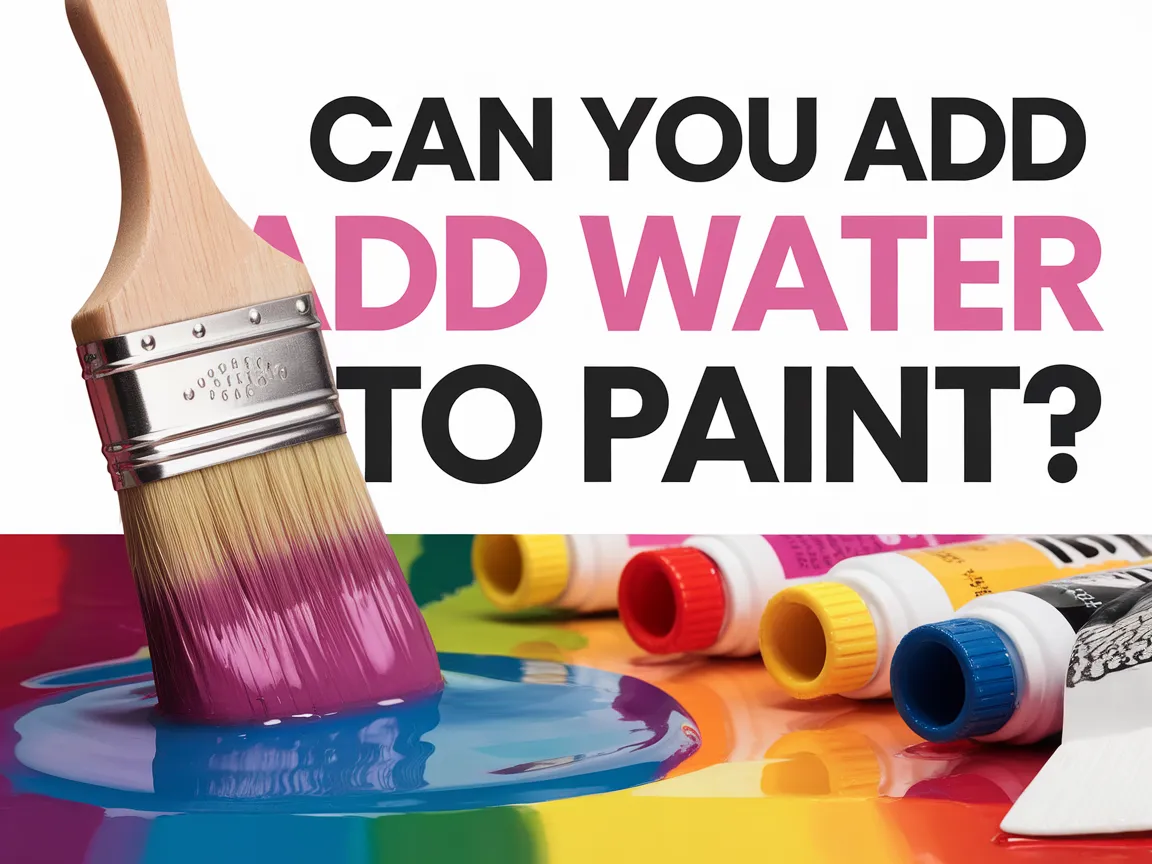How to Keep Acrylic Paint From Drying Out?
Published on: March 25, 2025 | Last Updated: January 7, 2025
Written By: Isabella Cruz
Acrylic paint is a special color mix that gets all shiny and pretty when it’s dry. It’s like magic! You can make cool pictures with it.
Knowing how to keep acrylic paint from drying out is super important. I’ve lost so many tubes because I didn’t store them right—nothing’s worse than opening a paint tube to find it all crusty and hard.
In this article, we’ll cover essential prep steps before you start, a step-by-step guide to keep your paint fresh, recommended color palettes, types of acrylic paints and their drying times, and common issues you might face. Plus, we’ll answer FAQs about keeping acrylic paint from drying out, because everyone needs a little help sometimes!
Contents
- 1 How to Keep Acrylic Paint From Drying Out?
- 2 What is Acrylic Paint?
- 3 Essential Preparations Before You Start
- 4 Step-by-step Guide to Keeping Acrylic Paint From Drying Out
- 5 Best Practices for Storing Acrylic Paint
- 6 Innovative Techniques to Extend Paint Life
- 7 Table of Ideal Acrylic Storage Conditions
- 8 Types Of Acrylic Paints and Their Drying Characteristics
- 9 Factors Affecting Acrylic Paint Drying Time
- 10 Common Issues When Keeping Acrylic Paint From Drying Out
- 11 Techniques for Reviving Dried Acrylic Paint
- 12 How to Properly Seal Your Paint Containers
- 13 Adding the Finishing Touches to Your Artwork
- 14 Creative DIY Project Ideas Utilizing Acrylic Paint
- 15 Frequently Asked Questions About Keeping Acrylic Paint From Drying Out
- 16 Conclusion
- 17 Useful Resources
How to Keep Acrylic Paint From Drying Out?
To keep acrylic paint from drying out, seal the container tightly after each use. You can also add water or a wet palette to slow drying time. Store it in a cool, dark place. Lastly, use a stay-wet palette for extended sessions.
What is Acrylic Paint?
Acrylic paint is a fast-drying, water-based medium made of pigment suspended in an acrylic polymer emulsion. It typically contains about 50% to 60% solids, giving acrylics their rich texture and vibrant color when dry. Artists exploring painting mediums appreciate the versatility and unique properties of acrylic paints.
The Finishing Touch
A freshly painted wall is a blank canvas. The best way to bring your room to life is with a single piece of statement art that ties everything together.
Browse Wall Art at Big Wall DecorTo prevent acrylic paint from drying out, use a palette with a lid or spray water on the surface. I’ve found that spritzing my paint while I work keeps it workable longer.
I used acrylic paint when I painted a mural for a local community center. I had to be mindful of keeping the paint wet during the project since the dry air can be harsh. A simple spray of water at the right moments made all the difference! If you accidentally get paint on your clothes during a creative project, you can remove acrylic paint stains effectively.
Essential Preparations Before You Start
What do you need to keep acrylic paint fresh?
- Palette or Mixing Tray: You’ll want something like the Palette Style 2-Fold. It’s essential for blending paints and preventing them from drying on your surface.
- Plastic Wrap or Airtight Containers: Get Snapware Airtight Food Storage for storing leftover paint to keep it moist longer.
- Water Spray Bottle: A small bottle like Fine Mist Spray is key for keeping your paint hydrated during sessions.
- Wet Palette: Consider using the Tamiya Wet Palette. It maintains moisture and prevents your colors from hardening.
- Retarder Medium: Add Winsor & Newton Retarder to your supplies. It’s designed to extend the drying time of acrylics.
So far we covered essential preparations before beginning. Let’s look at the next section on a step-by-step guide to prevent acrylic paint drying.
Also See: Can You Use Watercolor Paint on Canvas? Tips for Use

Step-by-step Guide to Keeping Acrylic Paint From Drying Out
Follow these steps to keep your acrylic paint workable for longer.
The Finishing Touch
A freshly painted wall is a blank canvas. The best way to bring your room to life is with a single piece of statement art that ties everything together.
Browse Wall Art at Big Wall Decor-
Choose the Right Brand Of Acrylic Paint
Select a high-quality brand of acrylic paint. Look for those with more extenders to increase their working time.
Consider brands with longer open times, typically around 15-30 minutes. Investing in quality reduces frustrations while painting!
-
Use a Palette With a Lid
Store your paints in a well-sealed palette. A lidded palette significantly reduces exposure to air, keeping your paint fresh for hours.
Some palettes even have airtight seals. This is a lifesaver for longer projects; it maintains your perfect blend.
-
Mist Paint With Water
Keep a spray bottle handy and mist your paint regularly. This simple action prevents moisture loss, avoiding a crust on the surface.
Here’s what to do: spritz your palette lightly every 15-20 minutes while working. It keeps the paint smooth and usable; this tip is a game changer!
-
Add a Retarder
Add a paint retarder to your paint. This additive extends the drying time, allowing you to blend and layer without rushing.
Follow the packaging instructions, usually around 10% of your paint volume. I’ve used this method in hot conditions, and it really extends my painting time!
-
Work in Smaller Amounts
Squeeze out only what you can use quickly. Working with smaller amounts minimizes waste and keeps the rest of your paint fresh for future sessions.
Try to pour out only what you can reasonably finish in 30 minutes. This strategy not only preserves your paint but also helps you make better color choices!
We have now covered ways to prevent acrylic paint from drying out. Next, we will discuss optimal storage practices for acrylic paint.
Best Practices for Storing Acrylic Paint
Great storage goes a long way in keeping your acrylic paint fresh and usable. Here are some effective storage tips you won’t want to miss.
-
Store Upright
Always keep your acrylic paint tubes or containers upright. This prevents leakage and contamination of your paint, keeping it clean for your next use.
-
Use Temperature-Controlled Spaces
If possible, store your paint in a temperature-controlled area. Extreme heat or cold can damage pigments and alter consistency.
-
Avoid Direct Sunlight
Keep your paint away from direct sunlight. Sun exposure can cause paints to dry out or even change color. A cupboard or drawer works perfectly!
So far we covered effective methods for storing acrylic paint. Let’s look at creative techniques to enhance paint longevity next.
Innovative Techniques to Extend Paint Life
Want to keep your acrylic paint fresh for even longer? Check out these innovative techniques!
-
Use Sealable Bags for Palette
Place your mixing palette in a resealable plastic bag during breaks. Just make sure to remove excess air to minimize drying.
-
Try a Humidity Control Pack
Consider using a humidity control pack in your paint storage. These packs help maintain an optimal humidity level, slowing down the drying process.
-
Freeze Your Paint!
If you have leftover paint, store it in the freezer! Just let it thaw in the fridge before use. This can extend paint life by weeks!
So far we covered innovative methods to prolong paint durability. Let’s look at optimal acrylic storage conditions next.

Table of Ideal Acrylic Storage Conditions
| Condition | Ideal Level | Effect on Paint |
|---|---|---|
| Temperature | 15-25°C (59-77°F) | Prevents separation or hardening |
| Humidity | 40%-60% | Minimizes evaporation |
| Light Exposure | No Direct Sunlight | Preserves color integrity |
Types Of Acrylic Paints and Their Drying Characteristics
Let’s explore the different types of acrylic paints: Heavy Body, Fluid, Open, and GW (Gesso White).
-
Heavy Body Acrylic Paint
Heavy Body acrylics are thick and creamy, perfect for creating texture. With high viscosity, they require short to medium drying times, allowing you to manipulate the paint before it sets.
-
Fluid Acrylic Paint
Fluid acrylics are thinner than Heavy Body paints, flowing easily onto surfaces. They dry quickly, typically in under 20 minutes, so keep your palette moist to prevent fast drying. They offer about 10% more flow than standard paints.
-
Open Acrylic Paint
Open acrylics stay wet longer, often up to 60 minutes or more, allowing ample time for blending. You need to work within this time frame to avoid rapid drying.
-
GW (Gesso White) Acrylic Paint
Gesso White functions as a primer and undercoat for acrylics. Drying time varies from 30 minutes to several hours, depending on thickness. Always keep acrylic paint sealed and cool until needed to avoid premature hardening—up to 50% longer than conventional brands.
Here’s a tip I’ve picked up: I love using Open Acrylics. Their extended drying time lets me enhance my painting skills through layering without the pressure of rushing.
Factors Affecting Acrylic Paint Drying Time
What factors prevent acrylic paint from drying?
-
Humidity: High humidity slows drying, while low humidity speeds it up.
-
Temperature: Warmer temperatures expedite drying; cooler temperatures keep paint moist longer.
-
Thickness of Paint: Thicker layers dry slower; thinner layers dry faster.
-
Additives: Retarders can extend drying time, giving you more time to work.
Common Issues When Keeping Acrylic Paint From Drying Out
My friend once painted for hours, but suddenly, her palette dried up! The airbrush spraying technique was used in low humidity, around 30%.
To fix this, I suggested using a spray bottle to mist water (10-20% Humidity) over her paints every 15 minutes. Just remember, acrylics need moisture!
Techniques for Reviving Dried Acrylic Paint
Got some dried-out acrylic paint? Don’t toss it yet! Here are simple ways to bring it back to life.
The Finishing Touch
A freshly painted wall is a blank canvas. The best way to bring your room to life is with a single piece of statement art that ties everything together.
Browse Wall Art at Big Wall DecorRehydration Methods
- Add Water: Just a few drops of water can work wonders! Mix it in until you get a smooth consistency again.
- Use Acrylic Medium: If your paint is really stubborn, mix in a few drops of acrylic medium. It helps rehydrate without diluting the color.
- Mix With Fresh Paint: Combine dried paint with a small amount of fresh paint to improve its texture and usability. Be careful with the ratio!
Best Practices for Dried Paint
Here’s how to salvage your art supplies.
| Technique | Recommended Action | Expected Outcome |
|---|---|---|
| Water Addition | Add 2-3 drops per 10 mL of paint | Softens texture, restores usability |
| Acrylic Medium Use | Mix in 5-10% of medium | Maintains color integrity, improves flow |
| Combining with Fresh Paint | Use a 1:1 ratio for best mixing | Creates a workable consistency, saves materials |
How to Properly Seal Your Paint Containers
Want to avoid future drying disasters? Proper sealing is key!
Tips for Sealing Paint
- Tightly Cap Tubes: Ensure you press the cap down until it’s fully secure to prevent air exposure.
- Store in Airtight Containers: Move leftover paint to airtight jars. It’s a real game-changer!
- Label and Organize: Use labels to identify colors and organize them for easy access during projects.
Adding the Finishing Touches to Your Artwork
After ensuring acrylic paint doesn’t lose moisture, seal your masterpiece with a clear acrylic varnish. Use a high-quality matte or glossy finish to protect it for 5-10 years.
Inspect it once fully dry. Look for cracks or uneven spots, measuring with a micrometer (0.01 Mm Accuracy). I’ve relied on Liquitex Professional for a perfect finish.
An insider tip: Mix a small drop of glycerin (0.5 Ml Per 100 Ml Of Paint) into your acrylic paint for smoother application and to slow drying time effectively.
Creative DIY Project Ideas Utilizing Acrylic Paint
How about painting your own terra cotta pots or creating a vibrant entryway doormat? With just a splash of acrylic paint, you can transform your dull garden décor or give your welcome mat a personal touch!
For these projects, grab some $5 (USD) pots and $10 (USD) for a large doormat. You’ll want a couple of brushes, which you can usually find for $2 (USD) each, and a few colors of acrylic paint for around $10 (USD). Depending on your pace, these could take you a neat afternoon or a weekend at most!
If you’re wondering how to keep acrylic paint from drying out, try mixing in a little acrylic retardant or covering your paint palette with plastic wrap when you’re not using it. From my experience, you can also use a spritz of water to keep your paint moist while you’re working; it’s a game-changer!
When exploring creative painting techniques with children, you might also be curious about painting tiny nails safely.
Also See: Can You Spray Paint a Pumpkin? It’s a Fun Project!
Frequently Asked Questions About Keeping Acrylic Paint From Drying Out
What Causes Acrylic Paint to Dry Out Quickly?
What causes acrylic paint to dry out quickly? Acrylic paint dries out quickly due to evaporation of water, which is its main solvent. Factors like high temperatures (Above 27°C or 80°F) or low humidity (Below 30%) exacerbate this, leading to rapid drying.
How Can I Rehydrate Dried Acrylic Paint?
How can I rehydrate dried acrylic paint? You can rehydrate dried acrylic paint by adding a few drops of water or acrylic medium to it. This helps revive it because acrylics are water-based and regain their flexibility with moisture. If you want to explore more techniques for restoring your dried paint, check out some professional paint restoration methods.
Is It Safe to Use Old Acrylic Paint?
Is it safe to use old acrylic paint? Yes, it’s generally safe to use old acrylic paint if it hasn’t dried out completely. The shelf life of unopened acrylic paint can exceed 10 years; however, quality may degrade, leading to poor adhesion or pigmentation. If you’re looking to enhance your painting techniques or explore new surfaces, you might want to paint 3D printed objects with precision.
What Should I Avoid When Using Acrylic Paint?
What should I avoid when using acrylic paint techniques? Avoid working in very dry conditions or exposing paint to direct sunlight. Such situations can speed up drying, making it difficult to blend colors and achieve desired effects. Interestingly, artists have long studied paint preservation techniques, with some fascinating historical insights into ancient painting preservation methods.
Can I Use Acrylic Paint on All Surfaces?
Can I use acrylic paint on all surfaces? No, you can’t use acrylic paint on all surfaces. It adheres well to porous surfaces like canvas, wood, and paper, but it struggles on slick or non-porous materials without a primer. If you’re curious about mixing colors like purple for your painting project, check out how to create purple paint.
How Do I Clean Up Dried Acrylic Paint?
How do I clean up dried acrylic paint? To clean up dried acrylic paint, use a mixture of warm soapy water and a scrub brush. This can effectively break down the paint layer because acrylics are water-soluble when wet but tough once dried.
How Can I Tell if My Acrylic Paint is Bad?
How can I tell if my acrylic paint is bad? You can tell your acrylic paint is bad if it smells foul or has developed a chunky, inconsistent texture. Quality deteriorates over time, impacting the mixability and finish of your artwork.
Can Different Brands Of Acrylic Paint Be Mixed?
Can different brands of acrylic paint be mixed? Yes, you can mix different brands of acrylic paint, but results may vary. Brands often use different formulations and sets of pigments, affecting color and consistency. If you’re working on a painting project that requires precise color matching, you might want to explore professional painting techniques.
Conclusion
I hope this guide has been helpful. We discussed key preparations, a step-by-step workflow, suggested color palettes, types of acrylic paints, factors influencing drying times, common challenges, and creative DIY ideas.
These insights should serve you well. To ensure your acrylic paint stays usable longer, remember to set up your workspace properly, utilize a palette with a lid, and explore moisture-retaining mediums—these practices greatly extend the paint’s lifespan.
For additional tips and tricks, visit Paint Answers.
Useful Resources
- Betti, C., & Sale, T. (2012). Drawing: A Contemporary Approach (6th ed.). Belmont, CA: Cengage Learning.
- Video: Acrylic Painting Tip – Keep Paint from Drying Out – Rachel Petruccillo
- Freezing Acrylic Paint to Stop Drying??? – WetCanvas: Online Living for Artists
- How to Keep Acrylic Paint From Drying Too Quickly
Isabella is a Filipino-American art writer and critic specializing in contemporary painting, blending her Filipino heritage with global art trends. She holds a BFA from California State University, Long Beach, and a Minor in Art History from the University of the Philippines. Isa has experience as a Gallery Assistant, Art Appraisal Specialist, and Social Media Creative for Art & Design.
Acrylic, Medium









